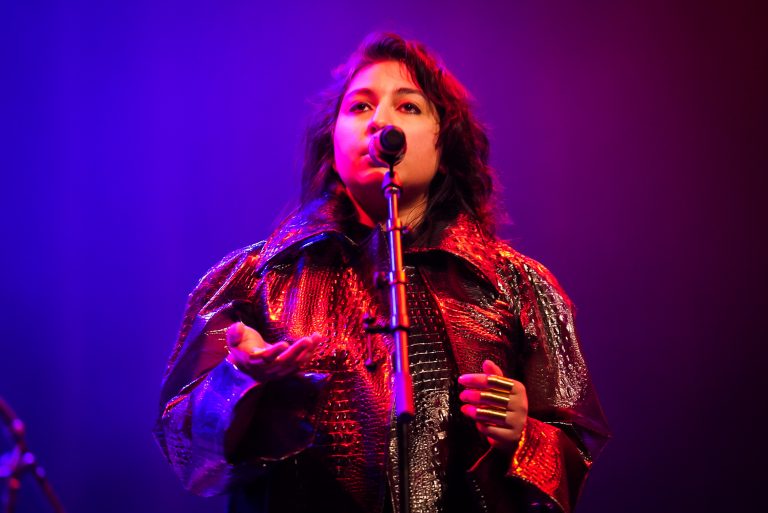After three years, and a noticeable but understandable silence from the curators behind Big Ears Festival in Knoxville, Tennessee, there was once again sounds of life and music in the streets of The Marble City. Shuttered since 2019 due to the ongoing COVID-19 pandemic, this festival, dedicated to all things noisy and experimental and occasionally revolutionary, was once again primed to bring a grand roar to over a dozen different venues across four days in the shadow of the Sunsphere.
With over 100 performances from artists stretching across various mediums, this year’s festival was a sometimes-overwhelming but always-compelling blend of indie rock, art-pop, electronic, folk, and big band sounds that managed to coalesce into something greater than its individual parts. There were also solemn and uplifting moments of poetry and personal discussion to break up the continual blur of music. The festival aimed to provide something for just about everybody, and it succeeded in realizing those lofty ambitions.
As I wandered around downtown Knoxville on the opening day of the festival, I began to think about how best to approach such an eclectic assemblage of performances. Instead of trying to relay the experiences of every show I attended, I thought it be best to just highlight 15 memorable shows I caught across four days of wild and welcome chaos. And after such a drought of live performances (for me personally), it certainly was a welcome return to…if not normalcy, then something that slightly resembled it. And while I didn’t catch every show I wanted – circumstances and scheduling saw to that – I was privileged to see a collection of artists offering up their hearts and voices for all of us in attendance. These are the performances which will be drifting through my head for weeks to come.

Patti Smith: Words & Music at The Mill & Mine / with her band at the Tennessee Theatre
This one is slightly cheating as I am combining her Words & Music show on Thursday with the more robust band-oriented show on Friday, but it’s hard to separate these performances as they represent both sides to her personality: the humorous and sardonic conversationalist and the raucous firebrand. Backed by her son Jackson Smith on guitar and Tony Shanahan on various other instruments, the Words & Music show was an intimate and relatively subdued affair, full of insightful anecdotes, solemn poetry readings, and Smith’s flair for turning personal experiences into universal sentiment.
She was constantly engaged with the audience, forgetting a line in her cover of Dylan’s “One Too Many Mornings”, and having to ask the audience for help. This led to one of the show’s greatest moments when she said, “That’s how I make songs mine — I fuck them up.” She also ripped a button off her jacket which was getting in her way, remarking that none of her jackets had all the buttons anymore. She read from her poetry collection Just Kids and turned the stage into an altar. She offered a forlorn take on Hank Williams’ “I’m So Lonesome I Could Cry” and then led us through jaw dropping versions of “Pissing in a River” and Stevie Wonder’s “Blame It on the Sun“ before stunning us all with an unexpected detour through “Because the Night”.
She often held back tears as she read poems dedicated to Sam Shepherd and her “boyfriend” Fred “Sonic” Smith. It was emotional for her and for us, a cleansing we didn’t know we needed. She spoke to us individually, person to person, one soul concerned with the welfare of another. And though there was no expectation of it given the festival nature, she came back for an encore, playing “People have the Power”. Before starting, she asked if Lenny Kaye was in attendance, intent on asking him to play with her, but it seemed he hadn’t arrived yet, so she brought up two members of the audience to play guitar alongside Jackson, Shanahan, and herself. It was the perfect communal ending to a show that focused on the ways in which different experiences can bring us together.
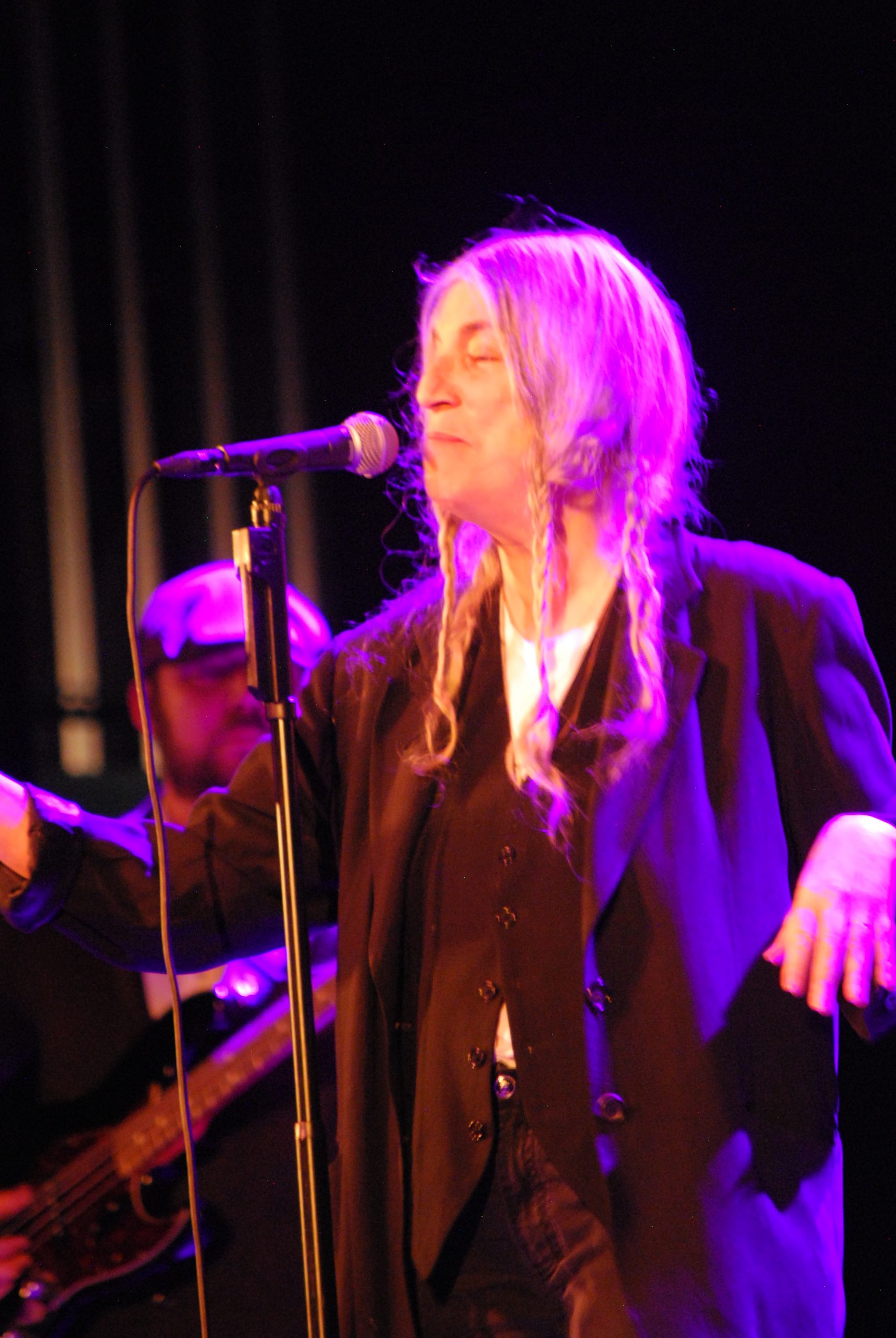
Her subsequent show the following night was a much rowdier performance. Backed by a full band, including Kaye, she howled and left scorch marks on the stage of the Tennessee Theatre. The setlist had some crossover between the two shows, but it never seemed like she was simply going through the motions. “Gloria” took the form of a boisterous sing-along while “Ghost Dance” was a stomping barnburner that left an electric charge in the air. There was intimacy here as well, as we all sang happy birthday to her stage manager Andrew. She maintained a rapport with the audience that never once felt labored as she would present “Beneath the Southern Cross” and “Free Money” as generous offerings conferred to us.
The version of “Because the Night” here was more muscular and felt poised to move mountains and hearts. She had nothing to prove and still gave us a hell of a show. As with the first show, the encore consisted of “People Have the Power”, and we all sang along without reserve. Gracious and humble, she was everything history had built her up to be. Her wit was sharp and self-deprecating; she gave us what we wanted but also showed us what we needed. It was a glorious thing to be a part of, a circus of words and movements and desires. And, collectively, these two performances stand as the highlight of the festival.
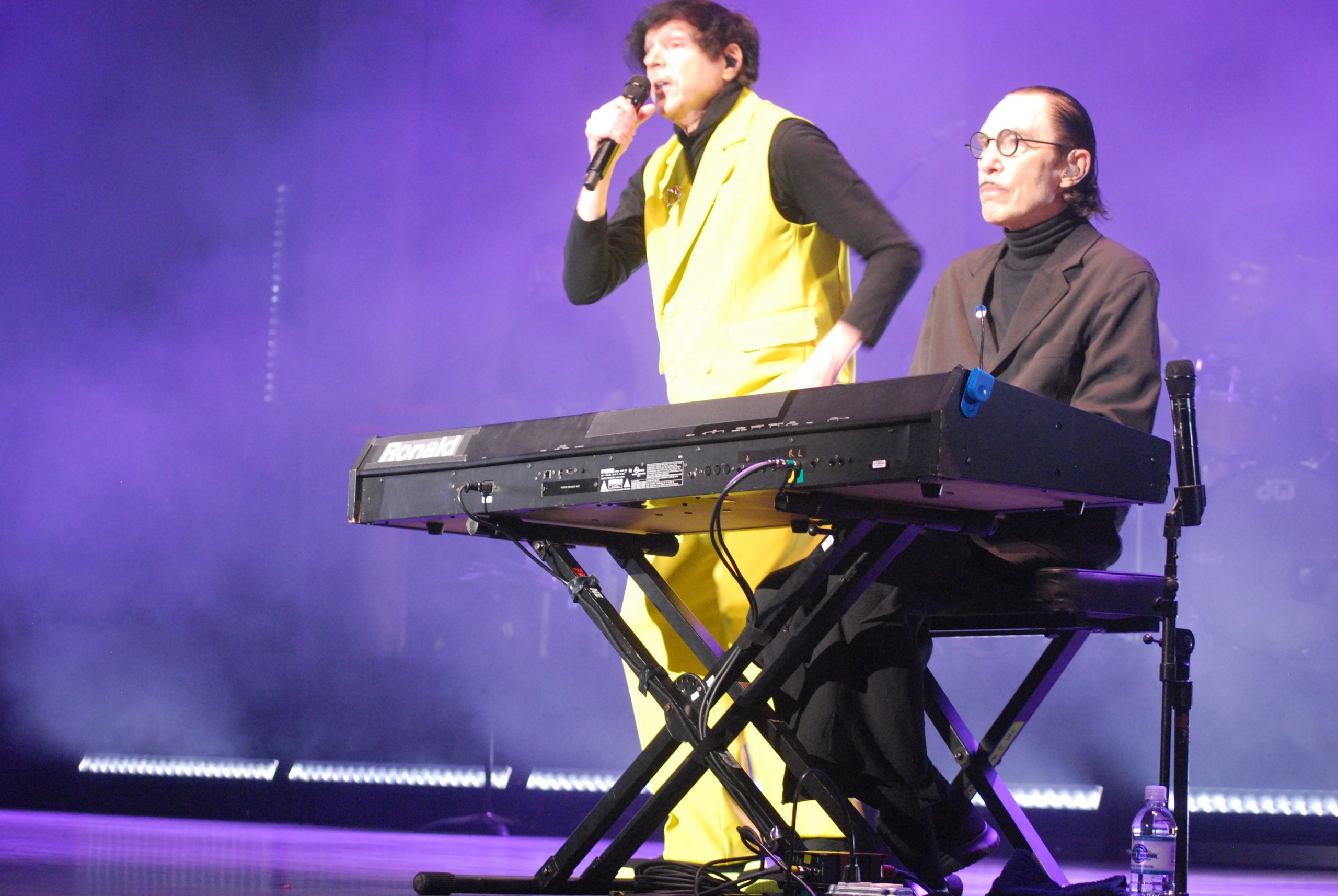
Sparks at the Tennessee Theatre
I learned very quickly that you have to get on the same wavelength as Ron and Russell Mael. As Sparks, their music can be obtuse, sometimes goofy, and always energetically invasive. The two make for an odd pairing upon first viewing, with Russell jumping around the stage, dancing and cavorting at odd angles while Ron maintains a permanent façade of stolidity. Eventually, this all begins to make sense, as each lay claim to certain extremes on the musical spectrum. Wirey and giddy, Russell is the Id, an impulsive presence prone to spontaneous bodily gesticulation while Ron represents the ego, always facing down the reality of the present.
Across 18 songs, they dug through their extensive history, drawing from most of their records and giving us a glimpse into their complicated pop genius. From the self-referential “I Married Myself” to the propulsive “Tips for Teens”, they made a case that their recent reassessment has been a long time coming. “Stravinsky’s Only Hit” revealed Ron’s knack for dense pop mechanics while “My Baby’s Taking Me Home” is likely burned into my brain, partly due to its repetitive but catchy chorus and partly because it was the song that they left us with as the show came to an end. Once acclimated to their brand of off-center pop madness, you see the joy and brilliance laid out in every track, and their performance was an inspired blend of theatricality and pop obfuscation.
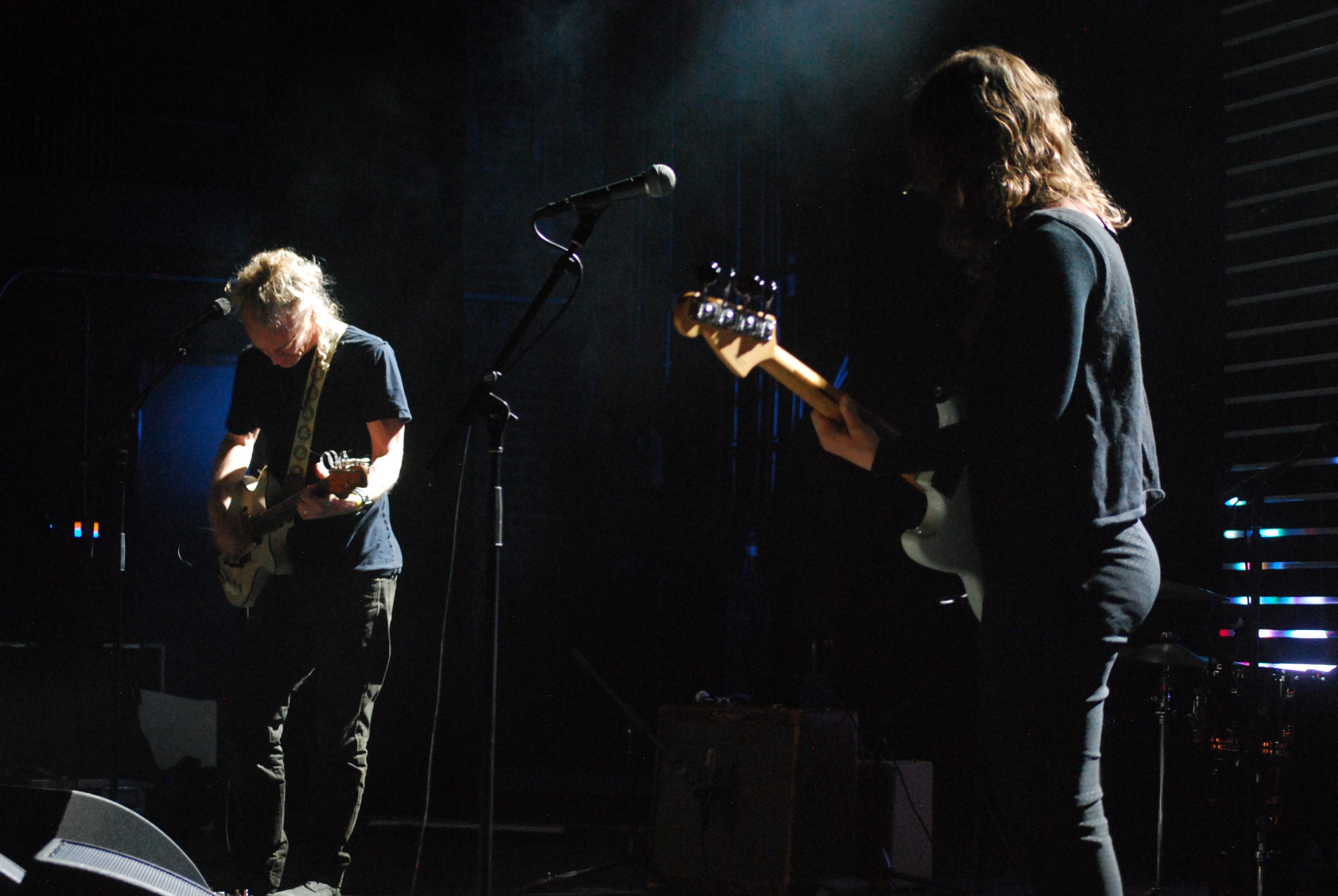
Low at The Mill & Mine
Would the density of Low’s latest record, HEY WHAT, be felt within the context of a live performance? That was the thought going through my head as they took the stage at The Mill & Mine – and one that was quickly obliterated as the staticky roar of “White Horses” was hefted onto the audience. The band tore through the entire new album, except for “There’s a Comma After Still”. And it was rapturous blur of noise and cheers and the sound of a guitar being gutted. The visual aspect, a triptych of lighted panels laid vertically behind the band, provided the perfect undulating atmosphere in which to enjoy the cacophony they provided.
As the set wore on, I began to feel a particular thudding in my chest. It almost felt like my body was recalibrating itself in response to the music. My heart seemed to synch with Mimi Parker’s every beat as my body swayed in odd fashion as Sparhawk’s guitar was systematically broken down to its base elements. The show became less observative and more participatory, with our bodies becoming just another aspect of the music. But that’s what Low have always been able to do, whether it’s in the studio or on a stage. Their music invites full and active involvement, and that was the case here as everything descended into a haze of distortion and vocal euphoria. They closed the set with C’mon’s “Nothing but Heart”, and it provided a thesis for the entire show. I was shaken and ready to be shook again I walked out in the cold night.
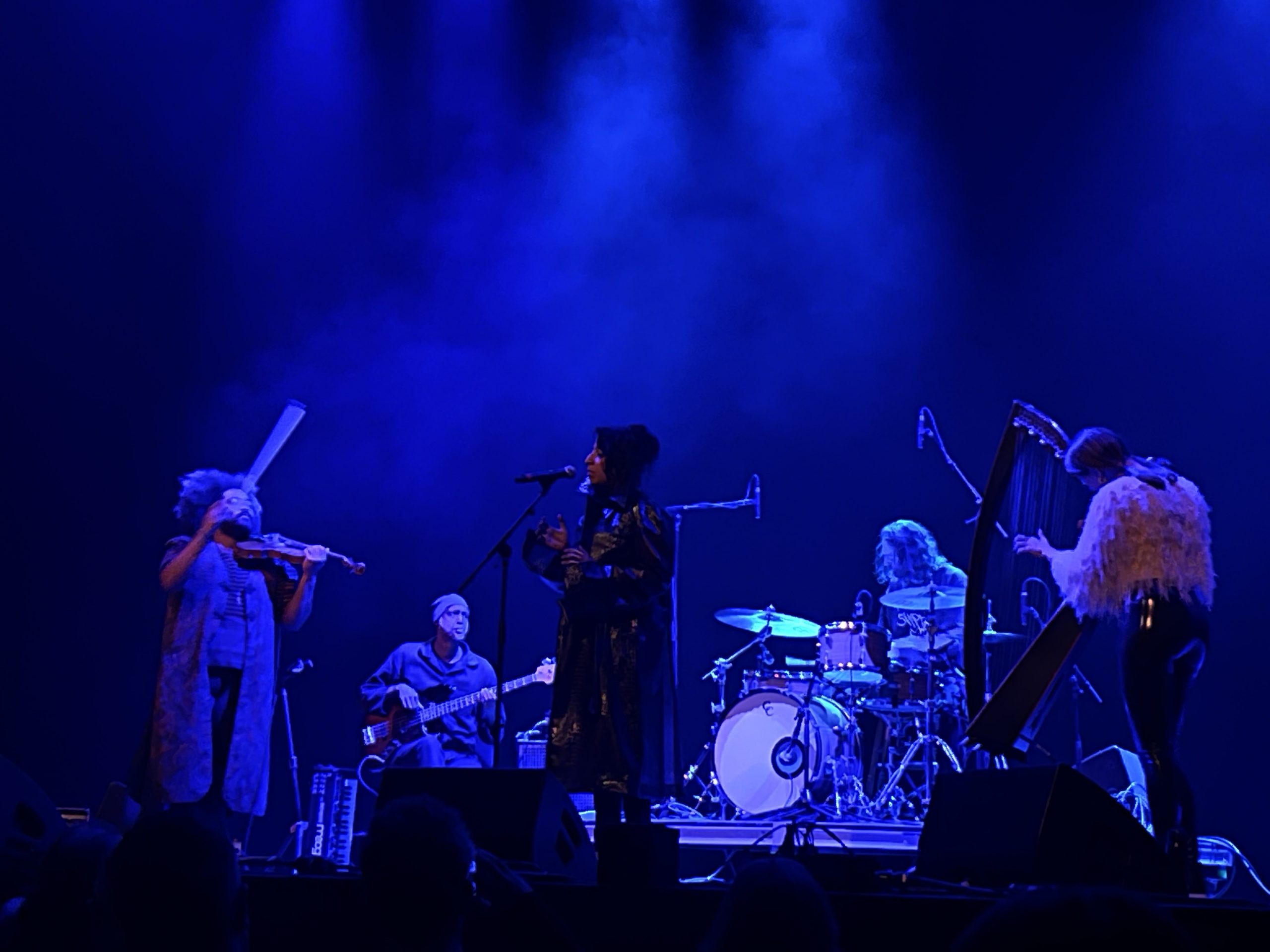
Arooj Aftab at the Tennessee Theatre
After having listened to Arooj Aftab’s 2021 record Vulture Prince countless times, I thought I was prepared for that experience to be translated in a live setting. I was wrong. For an hour, she and her backing band led us through sounds both liminal and definite, and as she explored the area between these two, she touched on something almost sacred in its import. As the music shifted and shrugged off convention with every movement, it became clear that Aftab was looking for something beyond a simply live translation – she was searching for a way to make these sounds open the cavities of our hearts and move us to adjust our thinking, if only for the time she occupied the stage.
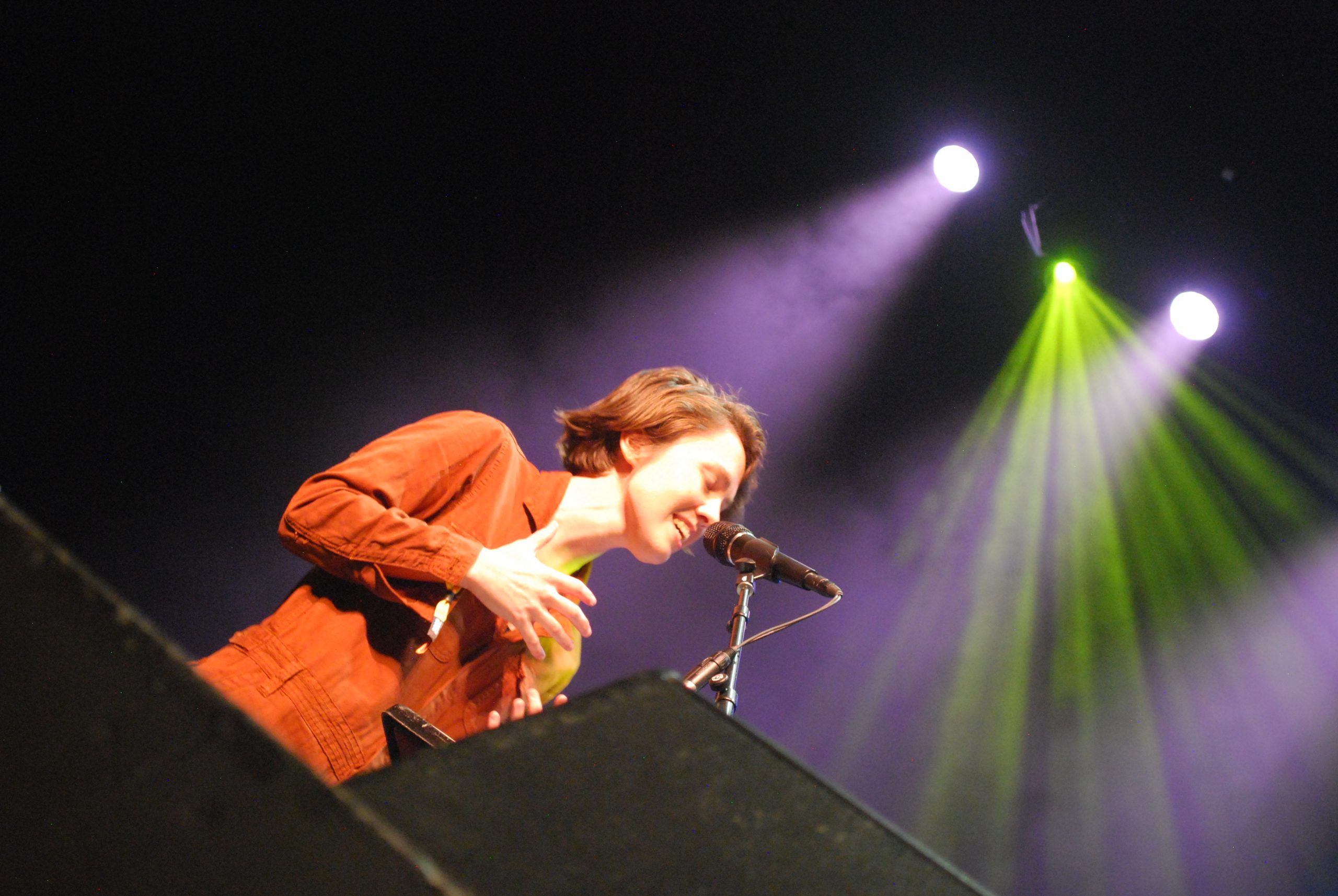
Caroline Shaw and So Percussion at the Tennessee Theatre
One of the greatest surprises at Big Ears this year was catching Caroline Shaw’s performance alongside New York City-based Sō Percussion. Her voice, a mercurial and expressive force, was paired with unusual percussive elements, such as flower parts, massive xylophones, and bowed glass discs. There was a surprising sense of discovery as they worked their way through a set littered with unexpected detours filled with avant-classical rhythms, folk distillations, and experimental narratives. It was refreshing to be so completely unaware of what was coming next. Crystalline and powerful, her vocals reshaped my assumptions of her work in what I had read prior to attending – and honestly, of what I had thought possible in regards to the human voice. It was a miraculous thing to witness, and I can say that I was in awe for every moment of it.
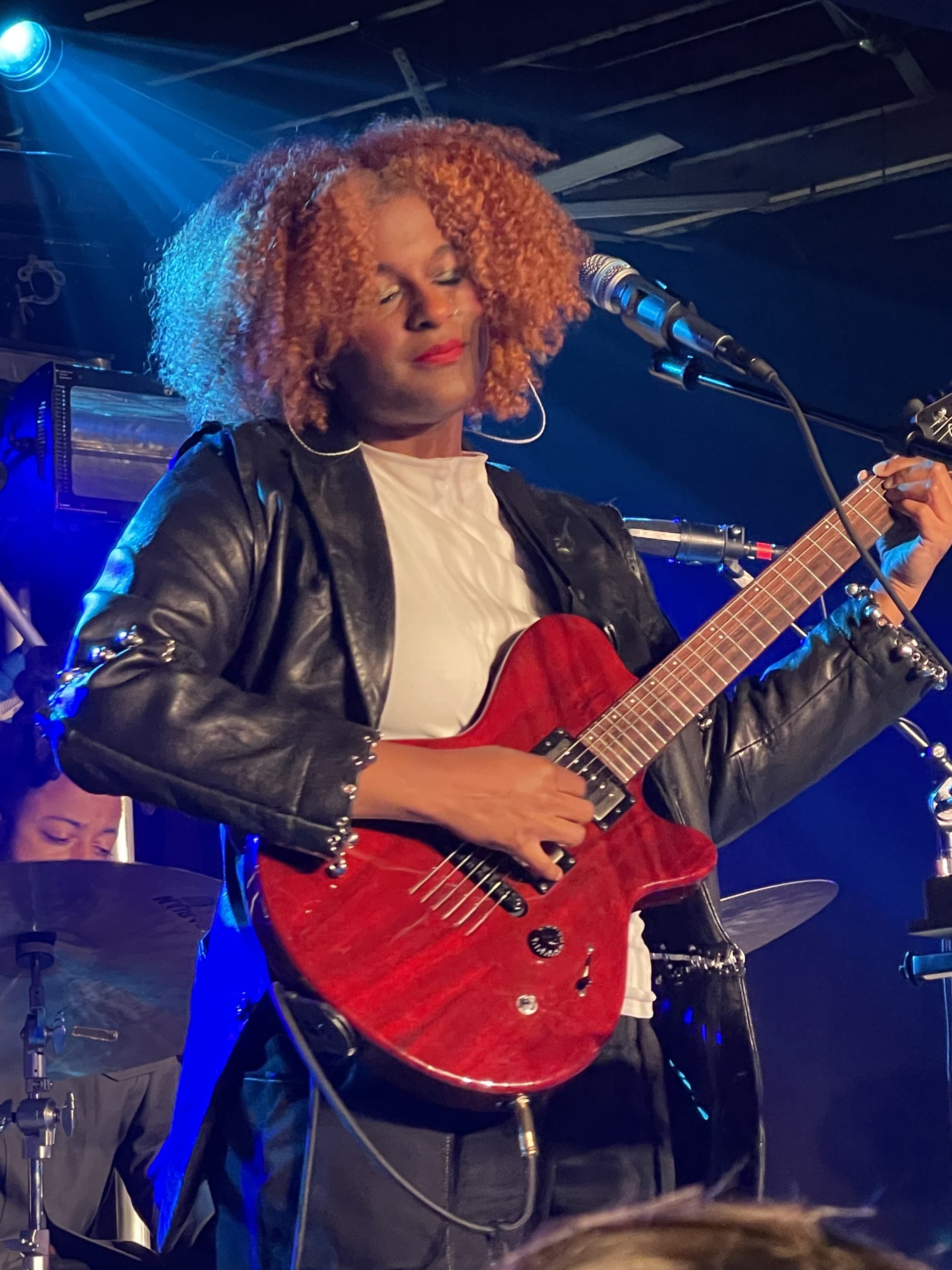
L’Rain at The Standard
L’rain absolutely destroyed her set at The Standard, forging a unique bridge between funk, rock, and experimental music. The show was marked by her wailing guitar and her voice which seemed to rise and push against the constraints of the ceiling. Her backing band was ridiculously tight, following her wherever she led and providing the necessary support to allow the songs to billow and consume the audience at their leisure. There was a fire in their hearts and a desire to imprint themselves in our memories that was easily heard and felt. It was easily one of the most rock-oriented shows of the festival and became the litmus test for those who wanted to follow in their steps.

Fennesz at Jackson Terminal
You don’t listen to music at a Fennesz concert; you absorb it on a subconscious level. It didn’t feel right as the oscillating thrums began to emanate from the speakers. I rolled up my jacket and put it under my head, laying back on the concrete floor, staring up into the wooded frames and ductwork in the ceiling. I closed my eyes and let the sounds wash over me. It was hallucinatory. Eventually, I didn’t even feel the presence of the people around me. I was just aware of myself and my body and its reaction to these sounds. The variation in the noise came slowly, subtly building in force until it threatened to overwhelm you. And then it was gone, the last echoes of solitude in a crowded room. I opened my eyes, got up, and left the building.
Mdou Moctar at The Mill & Mine
There was such a positivity to Mdou Moctar’s set. His latest record, Afrique Victime, was overflowing with a pure psychedelic bliss, and that’s exactly what they brought to their set. It’s hard to describe, but the guitars were both ragged and clear as a bell. They made this kind of craggy guitar-based noise into something that was spiritual and floated into the air above our heads, pausing momentarily before rising to some further heights. The Taureg guitarist and his band were aiming fort something lofty here, as they do on their albums. Something more than just the presentation of sound. They play for personal connections and for the interwoven relationships that are a part of our daily lives. And for a short time that evening, they played for us and our linked consciousness that seemed to be feeding directly into their hearts and instruments.

Nikki Giovanni at The Mill & Mine
Nikki Giovanni is one of the world’s greatest living poets, a true genius of wordcraft — and a Knoxvillian by birth. Her appearance at the festival was a coup by its organizers and a moment of sublime introspection and joy that lasted well after she left the stage. There seemed to be a perceptible gravity around her; people just seemed to be drawn to her. She recited a few of her poems, most notably “Ego Tripping”, one of her most well-known works. She also told a story of a male banana slug with two penises who just couldn’t seal the deal with a female banana slug. This candor about life’s miraculous details paired with an insightful look into what defines our social structures and their failings for people of color.
She was funny, biting at times, and evinced a deep passion with every syllable uttered. Being in her presence produced a physical effect in me, a desire to absorb and examine each word and gesture. Everyone seemed to be awed by her ability to offhandedly elicit deeper emotions than most writers could plan out in 10 years’ time. I briefly spoke with her later that day at a signing she was doing at a separate venue, and she was as vibrant and personable up close as she was from the stage. It was a privilege to be there and to spend even a moment in her company.
Petra Haden: Zorn: Songs for Petra Haden at the Bijou Theater
In 2020, avant musicians John Zorn and songwriter Jesse Harris wrote a collection of songs specifically for Petra Haden. Fans of her vocal styling, they resolved to compose these songs around the flexibility and malleability that she possesses. Titled Songs for Petra, it’s a swaying, jazzy record that gives hints at the complicated understructure holding everything up. You could hear those same sounds as she worked through the entire record from start to finish, but these seemed to be slightly more muscular versions than we heard on the album proper. Despite its genre hopping, the songs themselves are variations on pop construction, albeit ones that bask in their chameleonic shifts. Haden’s voice was something to marvel at, clear and sparkling as she loped through these songs – she cast a spell, and we were quite helpless as it moved through us.

Nubya Garcia at The Mill & Mine
It seemed that there was only a smoking crater left as we exited The Mill & Mine after Nubya Garcia’s set. Her brand of complex jazz implosions was on full display, a thunderous shower of sax skronks, thrumming basslines, and detouring percussion. A sultry and hypnotic presence, she obliterated any preconceived notions about jazz and its relevance for people unaccustomed to its often-dense movements. This was a righteous roar, a rush of sound that threatened to knock you off your feet. I was unprepared for its physicality, for the way it wrapped you up and pushed everything else out of the way. These songs were massive and loud and unafraid to get absolutely emotional. She led, and we followed; and for an hour, we were glad to be lost in the world of her making.
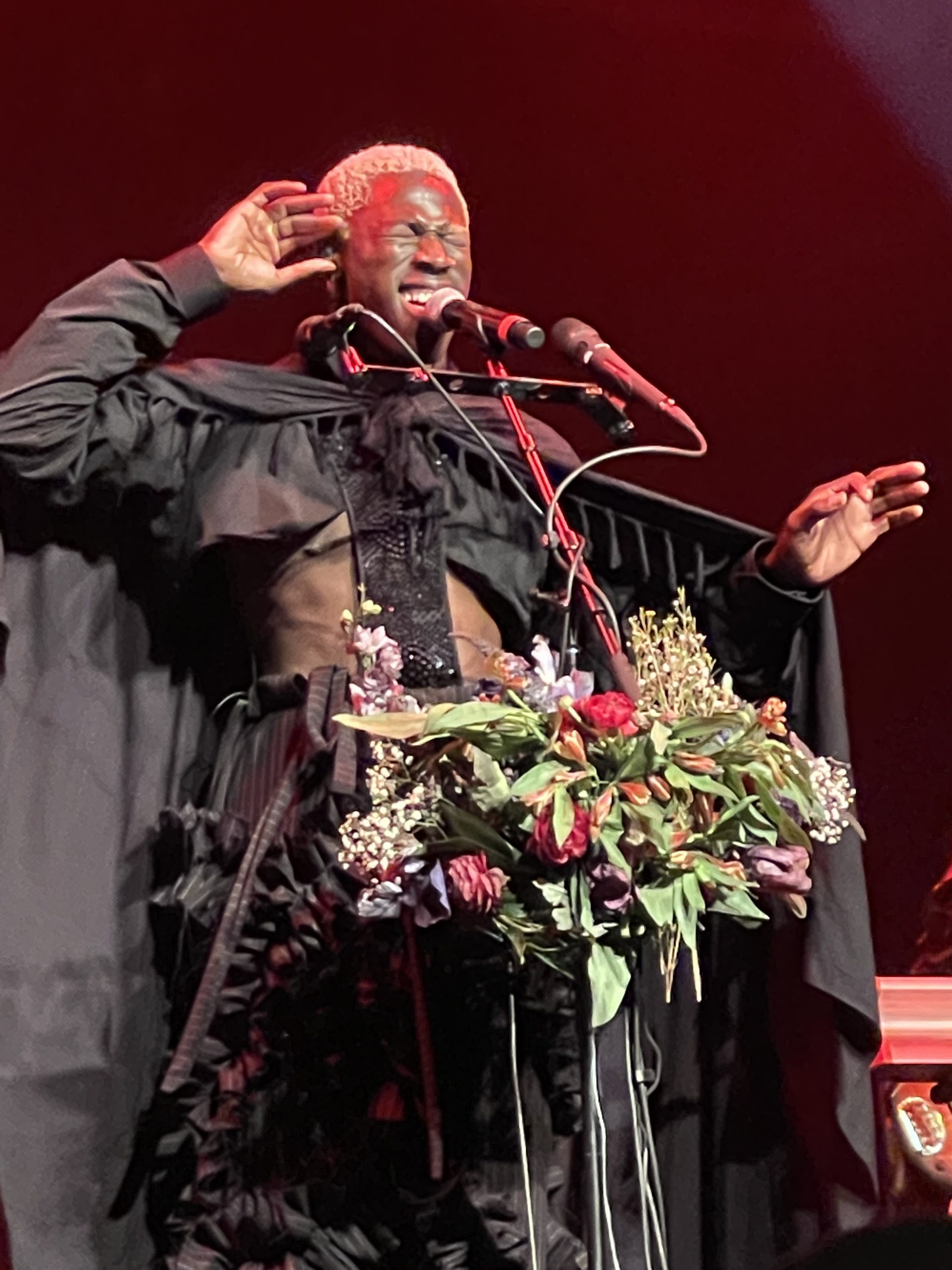
Moses Sumney at the Tennessee Theatre
Moses Sumney’s show was one of the most theatrical of the entire festival, and one of the best. Coming onstage in a brown ruffled ensemble and wearing a latticed mask, he was an enigma from the first second we laid eyes on him. He has a knack for bounding between emotional ache and exuberant rhythms, not that the two have to be mutually exclusive. And here, he was a blur of sexuality, unbridled creativity, and tactile sensation, as he came out into the crowd at one point and threw out roses to members of the audience. There was an energy to his performance that I’ve rarely felt, a sense of unpredictable tacticity. By the time he rolled out a cover of Bjork’s “Come to Me”, we were all spellbound and willing to hand over our souls if it would make the show go on for just a few more songs.
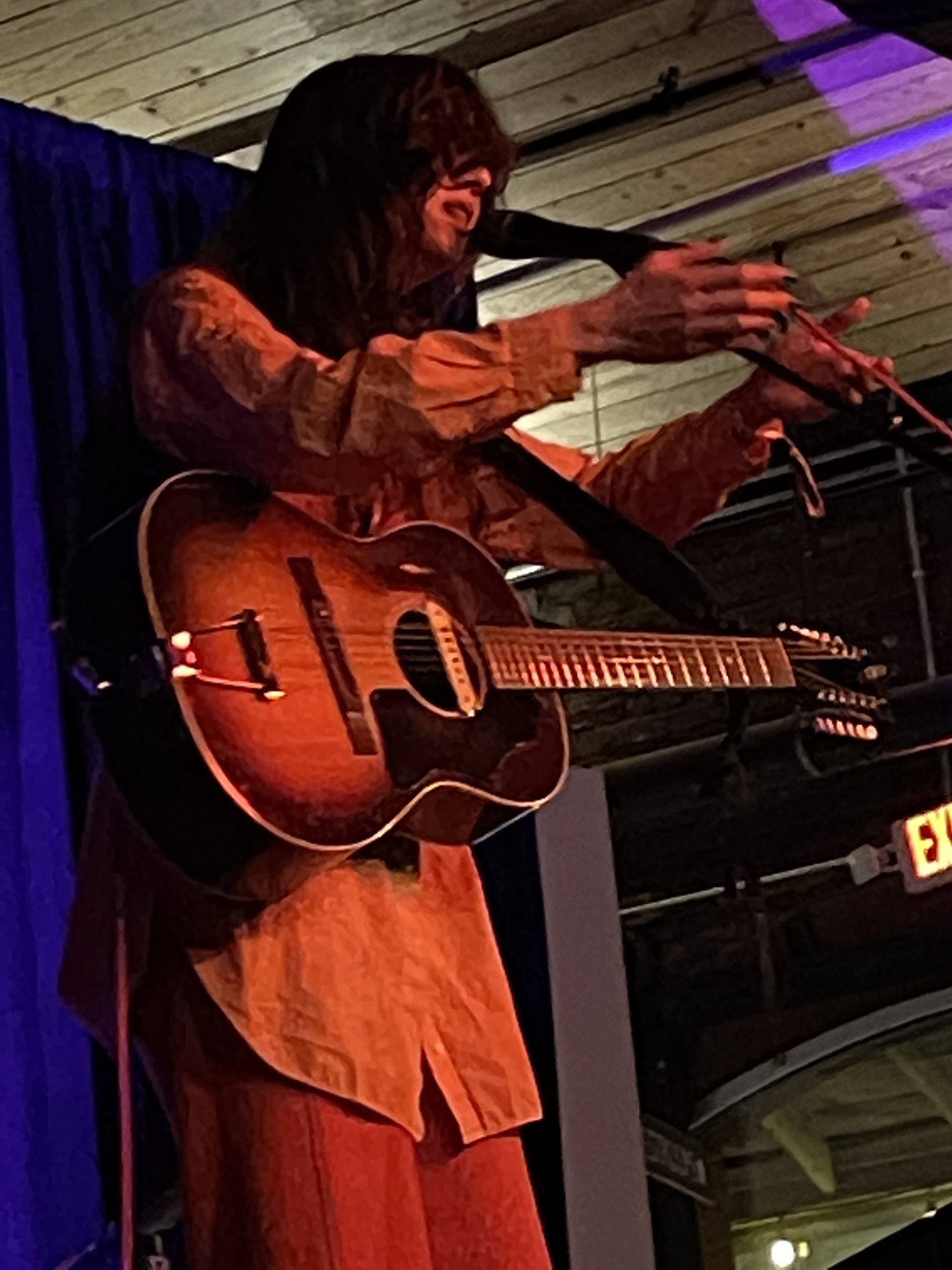
Circuit des Yeux at Jackson Terminal
I really wanted to lay down on the floor with my eyes closed as Haley Fohr worked her way through her set at Jackson Terminal. The room was small – the same one where I’d seen Fennesz – and it was already packed by the time I got there. Backed by her drummer and cellist, she captured a sort of religious reckoning in the short time she performed. I have often had trouble properly describing her music to people, and so I closed my eyes and just let it wash over me. There were no descriptions, no words about the heavy rumble of the cello or the operatic quality to her voice. These thoughts seemed to be meaningless as I sat and simply absorbed the raw emotion I was being offered. It was a powerful and disorienting set, and I wouldn’t have expected anything less.
John Zorn: The Hermetic Organ at St. John’s Cathedral
John Zorn was a name that you saw everywhere during this year’s festival. He was playing a handful of sets himself, while other musicians were tackling his original works in various settings throughout the city. I managed to catch his program The Hermetic Organ at St. John’s Cathedral late Saturday night. We all packed into this gorgeous edifice to the divine and listened as Zorn destroyed the traditions of sacred music. For roughly an hour, we watched as improvised a longform piece on a colossal organ built into the very walls of the cathedral. I swear that I am still unsure what I heard or how he made it sound that way. There were percussive elements to his performance and the organ itself seemed to come alive, breathing and stomping around the pulpit as Zorn’s hands ran roughshod over its length. I’m convinced I’ll never hear its’ like again.
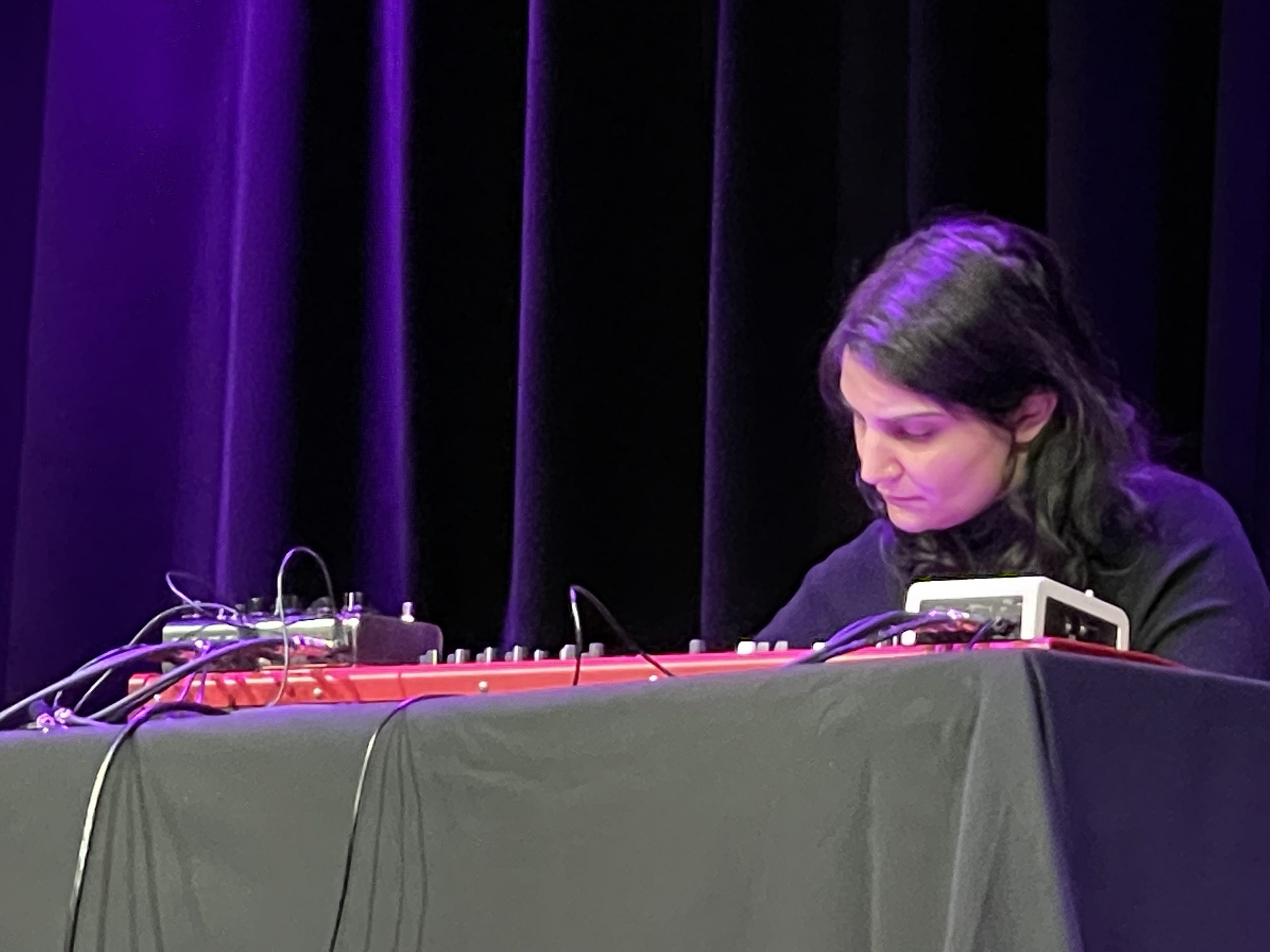
Sarah Davachi at Old City PAC
Watching Sarah Davachi perform a longform electroacoustic piece, minimal in appearance but rich in subtle fluctuations, was a genuinely thrilling way to end the festival. She sat at a table covered in synthesizers, samplers, and various cables and proceeded to create a mesmerizing display of subdued electronics. Repetitive and droning, you had to fully immerse yourself in her environment before the smaller internal movements began to make themselves known. The changes were slight to start, but eventually the hair on your neck came to attention and a whole world of noise opened up before you. There was nothing dramatic here, no grand overture of emotional release. It wasn’t that kind of performance. It was something much deeper and one that will stay with me longer, I think. As the sounds began their inevitable decline, my eyes watered, and my heart was full.

